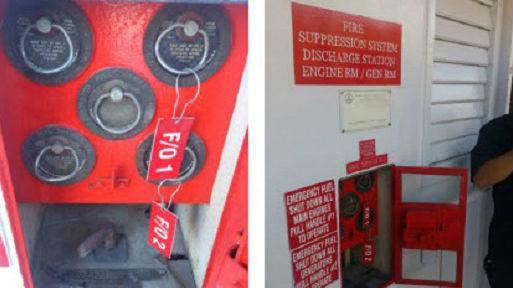Taking Napoleon's Approach to Safety

Op-Ed by Bob Couttie
Bad, confusing design is a hazard we don’t hear about very much but in an emergency the difference between good design and bad design may be the narrow gap between success and tragedy. Take a look at the picture above. Can you immediately tell which tags to pull to cut off fuel and which to pull to activate the CO2 fire suppression system? In the dark? In rough weather? In a hurry?
This particular example come from the a U.S. Coast Guard alert regarding the design and testing of emergency control systems and the accidental release of CO2 into manned spaces. During an uninspected towing vessel exam, a vessel crewmember intending to test the fuel oil shut-off cables instead pulled the CO 2 system release cables. Fortunately, in this instance the audible alarm system and release time delay functioned as intended, allowing all personnel to safely evacuate the machinery spaces prior to discharge.
.jpg) “Accidental releases are not uncommon and vessel crewmember and Coast Guard inspector fatalities have occurred in the past,” says the U.S. Coast Guard alert.
“Accidental releases are not uncommon and vessel crewmember and Coast Guard inspector fatalities have occurred in the past,” says the U.S. Coast Guard alert.
In another case, an inspector found two sets of remote emergency shutdowns with only one set operational. The original station appeared to be fully operational, but was not connected. The operational shutdowns were at a separate location.
All too often designs simply ignore the people who have to actually use the system, often under pressure. It is not an issue limited to CO2 systems. Poorly designed system controls or human interfaces such as ECDIS controls, badly designed lifeboats and launch systems, vessels designed to vent cargo spaces into manned spaces, have all taken their toll of seafarers and ships.
Rarely are they adequately tested with attention paid to the hazard of errors under stress.
There is no point in testing such systems with experts well-trained in their use.
Napoleon, when considering plans for battle, would call in the nearest corporal to ensure that he understood the plan because if a corporal understood then so should everyone else.
Those designing interfaces for seafarers would do well to take a leaf out of Napoleon’s book.
The safety alert is available here.
Editor’s Note: The opinions expressed herein are the author’s and not necessarily those of The Maritime Executive.
